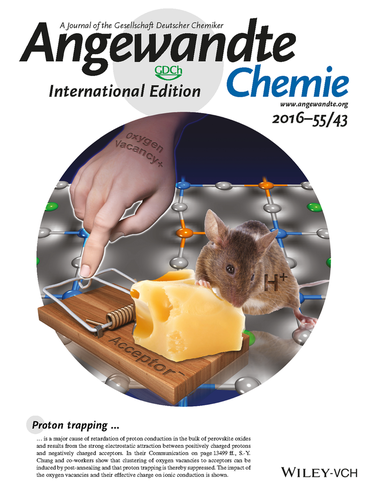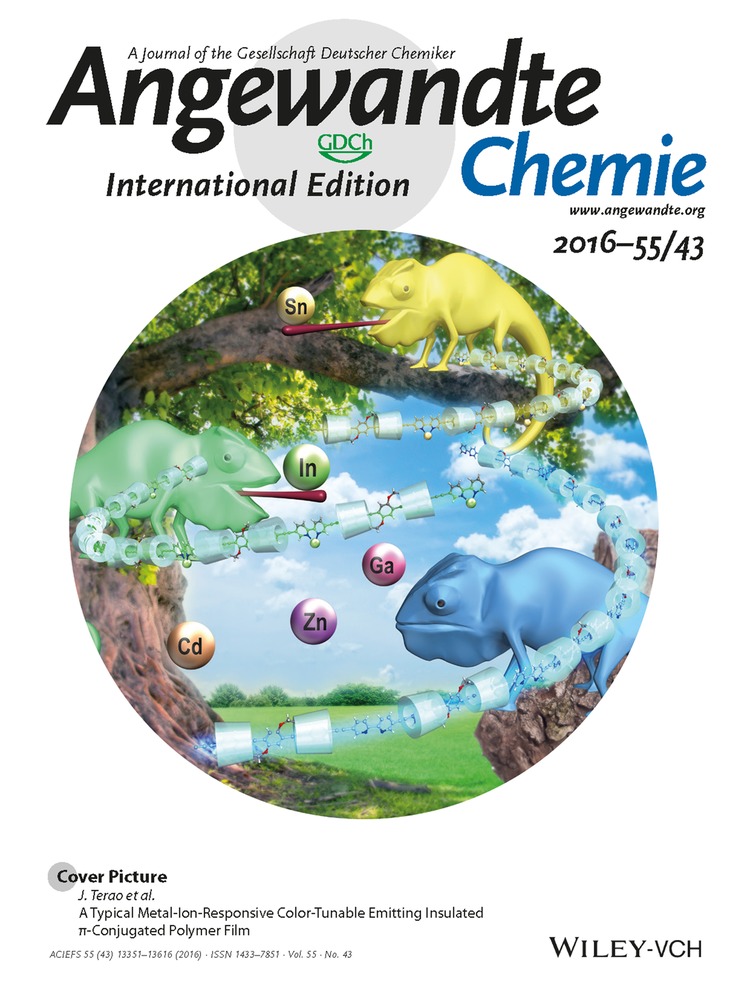Inside Back Cover: Vacancy-Induced Electronic Structure Variation of Acceptors and Correlation with Proton Conduction in Perovskite Oxides (Angew. Chem. Int. Ed. 43/2016)
Graphical Abstract
Proton trapping is a major cause of retardation of proton conduction in the bulk of perovskite oxides and results from the strong electrostatic attraction between positively charged protons and negatively charged acceptors. In their Communication on page 13499 ff., S.-Y. Chung and co-workers show that clustering of oxygen vacancies to acceptors can be induced by post-annealing and that proton trapping is thereby suppressed. The impact of the oxygen vacancies and their effective charge on ionic conduction is shown.





